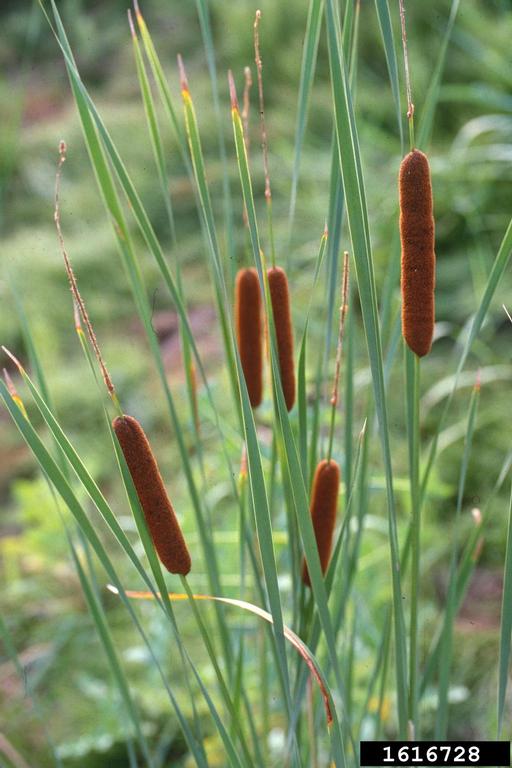Weed Of The Month: Cattail
 | Author:
Allison Kosto, MSU Broadwater County Extension Agent
MSU Broadwater County Extension Agent |
Weed of the Month: Cattail
Allison Kosto
MSU Broadwater County Extension Agent
Like many native species, cattail has many positive qualities but given the right environmental conditions, it also has the ability to take over and cause concern.
Description & Habitat
Native throughout North America, cattails are found in wetland areas such as along ponds, marshes and slow-moving waterways. They prefer shallow water that is 1.5 feet or less. Cattails have a long, slender grass-like stalk that can grow up to 10 feet in height. In the late summer, they form the brown seedhead that most of us associate with cattails. In small quantities, cattails are often desirable, creating habitat for fish and wildlife and shelter for birds. Cattails help prevent streambank erosion and can slow the movement of water to trap sediment and silt. Research has also shown that cattails can remove pollutants from the water through their roots.
However, cattails are also notorious for taking over a pond and forming thick stands. They have a rhizomatous root system which allows the plant to spread under water in addition to fluffy seedheads. If the water isn’t too deep, cattails will continue to spread along the edge and into the body of water. Once cattails have taken over, it becomes difficult to access the water for recreation, livestock or wildlife. Additionally, cattails can reduce the diversity of other wetland plant species and cause the waterway to lose its aesthetic appeal.
Management
Typically, full control is not necessary. Reducing the population in high-density sites can allow for the appropriate blend of benefits for wetlands and wildlife but still maintaining access and plant diversity. The exact amount of acceptable cattails is up to the landowner to decide. However, a good rule of thumb is to limit cattails to about 10% of the shoreline.
Physically removing cattails may be an option in some situations either by hand or machine. Remove as much of the root system as possible because the plants can regrow from the root fragments. Repeated cutting can also reduce cattails and will eventually reduce the root reserves of the plant causing it to die. It’s best to cut in late summer.
Although not always feasible, a more permanent solution to remove cattails is to dredge the pond to increase the depth. Cattails are unlikely to grow back if the water depth is greater than 18 inches.
Herbicides can be effective but need to be used cautiously in the water. Only aquatic herbicides can be used. Most commonly used chemicals include Reward and Rodeo. Make sure to read the label so that the product does not have any adverse effects on fish. Common chemical names are used for clarity but do not imply endorsement of a product or brand.
For assistance on weed identification and management, contact the MSU Extension Office in Broadwater County at 406-266-9242.
Article Images
Click on Image Thumbnail(s) to view fullsize image
PhotoCredit: Photo Credit: Doug Doohan, Ohio State University
Image 1 Caption: Cattail Bugwood
Photo Credit: Doug Doohan, Ohio State University
